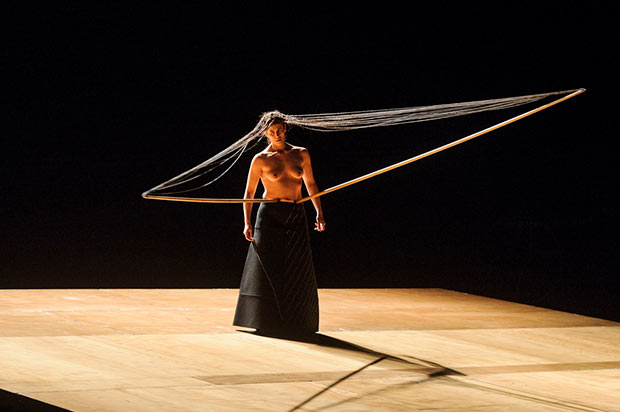
© Foteini Christofilopoulou. (Click image for larger version)
Sasha Waltz & Guests
Korper
★★★★✰
London, Sadler’s Wells
1 March 2018
Gallery of pictures by Foteini Christofilopoulou
www.sashawaltz.de
www.sadlerswells.com
In Korper, a succession of visually striking images inhabits the stage. Framed so evocatively by lighting designers Valentin Galle and Martin Hauk, these images, presented in animated tableaux, rigorously interrogate the human body.
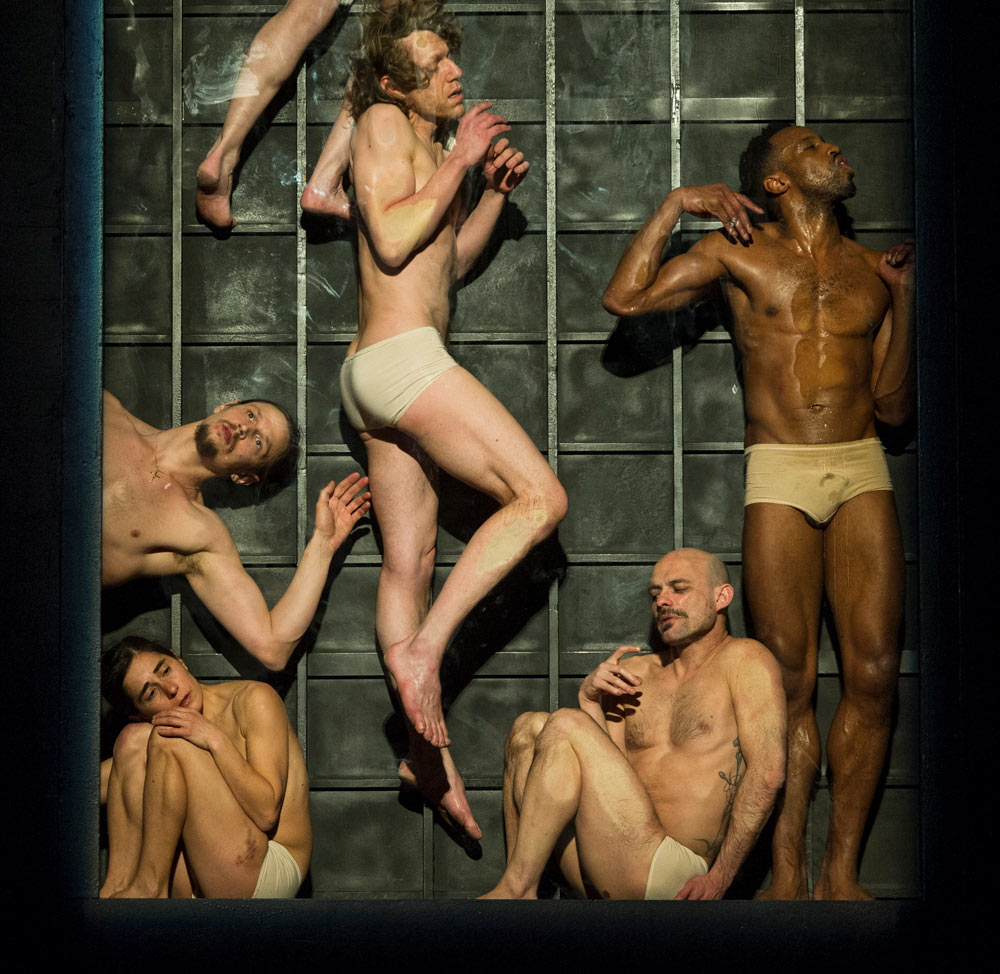
© Foteini Christofilopoulou. (Click image for larger version)
Movement is crafted seamlessly from various interventions carried out by Sasha Waltz’s dancers such as measuring the height and weight of each other; or drawing red circles around the organs of partners then estimating the cost in euros. A small group extend their bodies into rigid planks and play around with being lifted and arranged. As they are manipulated it is like watching builders or scaffolders at work. In another scene the performers drag their partners along the ground or lift them from the floor by folds of their skin.
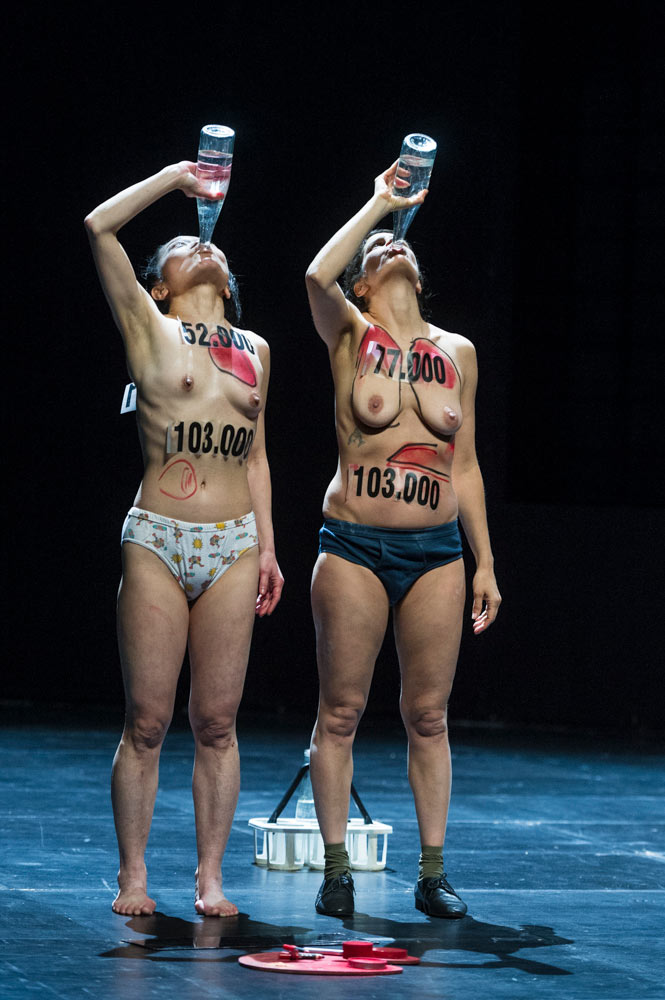
© Foteini Christofilopoulou. (Click image for larger version)
Topless for most of the work, the seven men and six women unselfconsciously offer their bodies for experiments and calculations which ask clinical or scientific questions about physical appearance. They are both researchers and guinea pigs, exploring each other in an unusually unsentimental and non-sexual manner. There is no room for reading the body sexually here. As they form a mound of fleshy bodies, layered on top of each other, it’s easy to understand why audiences might be upset by such imagery and its association with mass graves.
Alongside the detached calculations however, Waltz and collaborators create other theatrical musings which are emotionally loaded because of what they say about ethics and mortality. Hans Peter Kuhn’s music – a collage of high definition bodily sounds – clicking, hiccupping, gurgling, dripping water, mixed with brooding, electronic white noise creates another powerful dialogue with the choreography that intensifies the impact of its reception. There’s a scene in which the dancers filter in behind a glass window, set into a massive black diagonal wall which dominates the stage. Confined in space, pushing against the glass they squirm slowly above and around each other like creatures exhibited at the zoo or under scrutiny in a lab. Their breath clouds the glass while sweat is smeared across it transforming the window into a living painting.
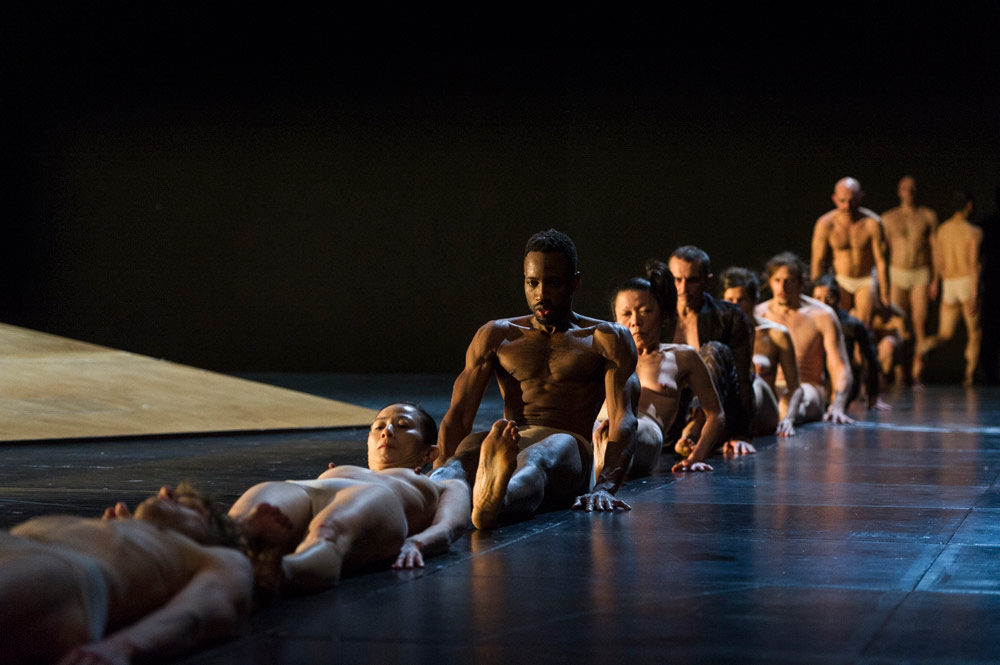
© Foteini Christofilopoulou. (Click image for larger version)
One of the most famous photographs that we see in publicity about Korper is taken from the hair solo: the statuesque Clementine Deluy travels regally across the stage holding two long poles, from whose extremities her braided hair extensions are attached. She controls the trajectory of her hair high in space by steering the poles. Here the goddess archetype is suggested, a stunning image which carries ritualistic as well as architectural resonances. The haunting accordion music in Kuhn’s score further adds pathos to this extraordinary scene.
Other sections although still surreal and uncanny are more light-hearted such as the narrated testimonial by Claudia De Serpa Soares in which she shares some personal facts about her physiology, in an unaffected and spontaneous delivery: how she would like to have different coloured eyes like her mother, or hates the day before her period when she feels like her head will explode. As she speaks, she points to body parts which don’t match the words she uses to label them, like a dyspraxic person. This disconnect between anatomy and its taxonomy is a common theme which maybe hints at how little we really know our lived-in bodies.

© Foteini Christofilopoulou. (Click image for larger version)
Luc Dunberry’s story is neurotically paranoid as he recounts a list of imagined ailments and prefaces a section in which various eccentric activities reveal how psychologically unstable the body is, including someone skiing down the side of the wall, frenetically dissecting a teddy bear and trying to shake the water out of a body. It’s chaos as the thirteen performers career around the stage in pursuit of their crazy obsessions, but the wall climactically crashing down saves our jangled nerves.
Another focus is on unique peculiarities and anomalies of the body, challenging the notion of the perfect body. Waltz presents us with distorted beings which look wrong but function successfully. This is enacted through a mini freak show in which ‘centaur’ duets are danced, where one person’s upper torso is visible while their lower body comprises of their partner’s legs. These couples perform a series of complicated contortions which are absurdly convincing.
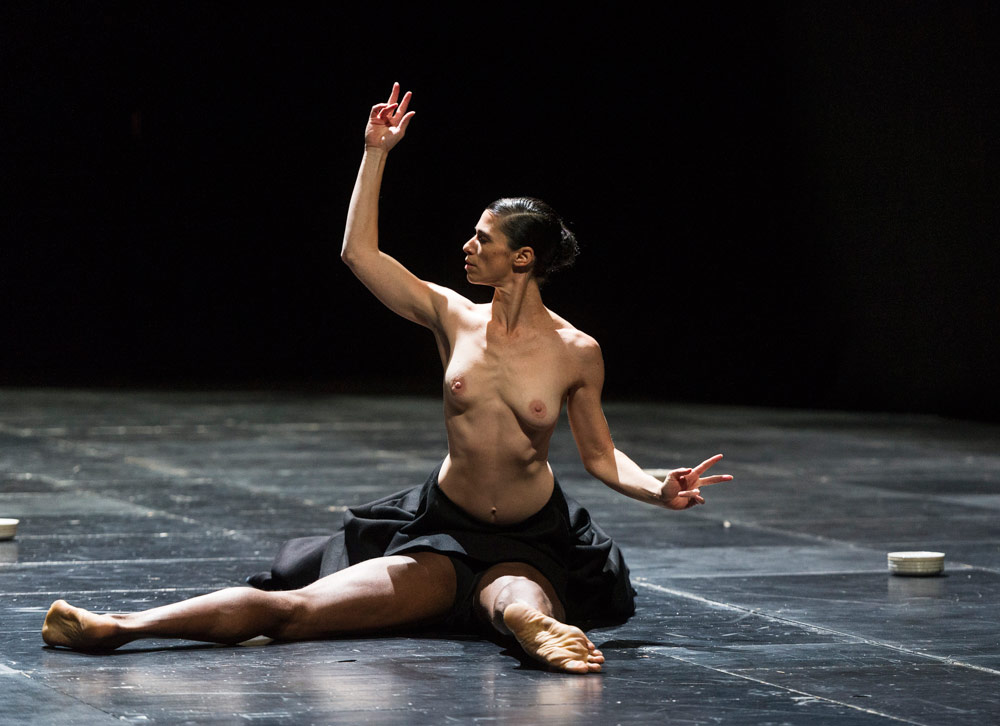
© Foteini Christofilopoulou. (Click image for larger version)
Waltz asks many questions which are still relevant eighteen years after the piece was first premiered in Berlin, in fact there was so much she felt had been unsaid that she went on to make a trilogy. While it was an immensely important work then, because of its contribution to dance as highly visual, imaginative dance-theatre built by means of a phenomenal artistic collaboration, it still fascinates today. The body that Waltz interrogates resonates more than ever with the narcissistic, highly mediated and confused body that we live with now.















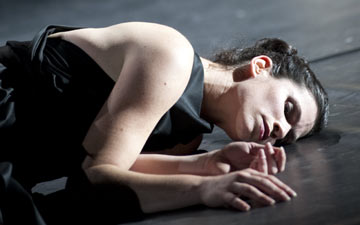
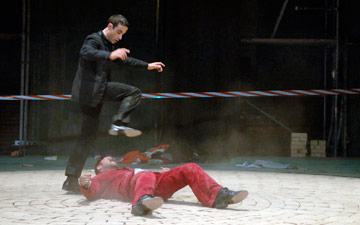
You must be logged in to post a comment.